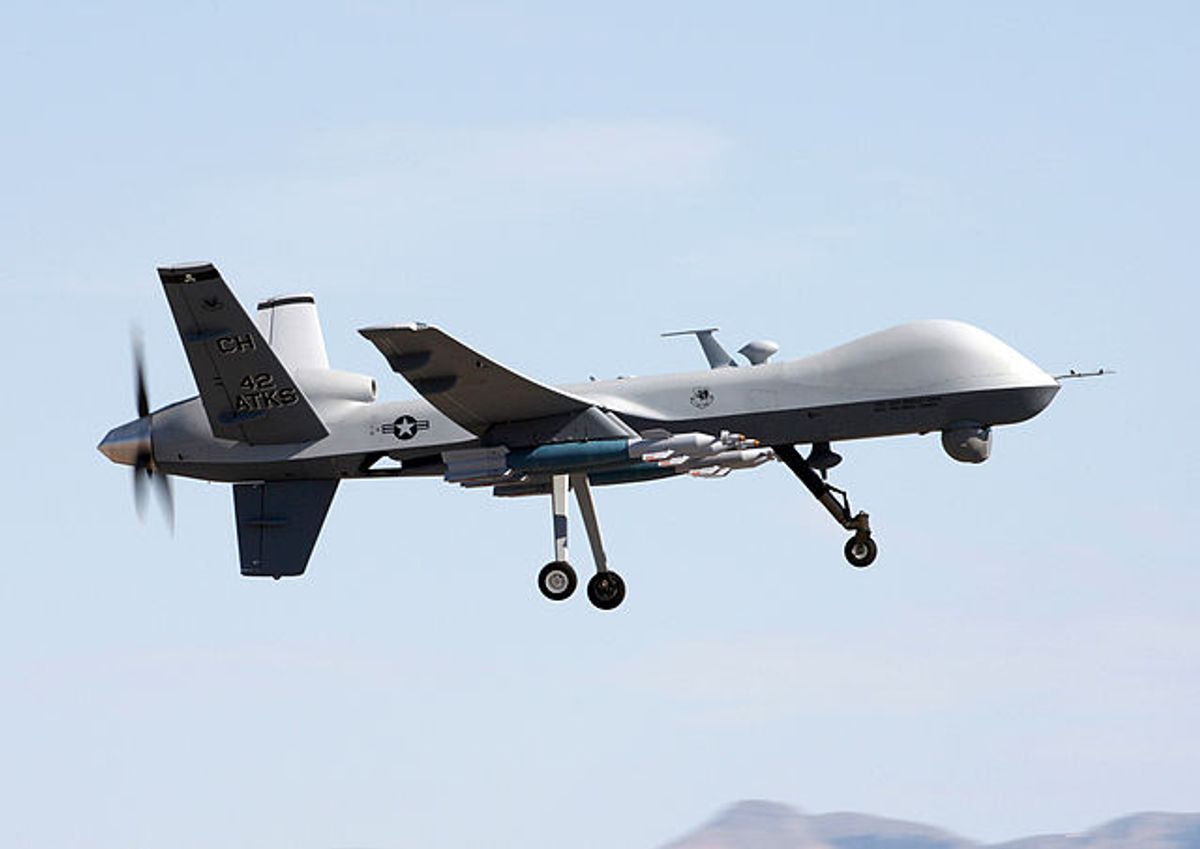Ever since the federal government announced plans to expand its use of drones for domestic surveillance, concerns have been growing over what that will mean, particularly for people’s right to privacy. It seemed like only a matter of time, then, before smaller local governments started passing laws to try and grapple with the issue. On Monday, Charlottesville, Va., became the first city to pass an anti-drone resolution.

The legislation “calls on the United States Congress and the General Assembly of the Commonwealth of Virginia to adopt legislation prohibiting information obtained from the domestic use of drones from being introduced into a Federal or State court” and “pledges to abstain from similar uses with city-owned, leased or borrowed drones,” according to US News and World Report. The resolution also expresses support for a statewide two-year moratorium on drones that’s being debated.
And Virginia isn’t the only state taking action: Maine, Missouri, Nebraska, North Dakota, Oklahoma, Oregon, Texas, Montana, and Florida all have drone-regulation bills in the works, according to the ACLU blog.
Of course, the big question that hovers over all of these bills and resolutions is whether they will make any difference. Can words on paper in state and city legislatures stop the federal government from essentially doing what it wants with unmanned aerial vehicles (like killing an American citizen without trial)?
That’s the same question on the mind of AJ Kohn, a law student who has dreamed up a project to try and stop drones through architecture. Kohn recently blogged about the project, an anti-drone place called Shura City, at Chapati Mystery, where he wrote about the failure of the law in the face of drones:
The idea for my final project, an architectural defense against drone warfare, came from the realization that law had no response to drone warfare. My own understanding of the ongoing [War on Terror pseudonym] as a civil rights issue is irrelevant; we only learn civil rights as a historical happening, not a current struggle. But architecture has a proud anti-legal tradition. Architecture is a way to protect people when law chooses not to.

A rendering of AJ Kohn’s anti-drone Shura City (image via scribd.com)
Kohn is not an architecture student, and his proposal is rough, at best. He lays out the details of it in a nine-page report: The structure involves a closed circuit of buildings so that “drones targeting individuals will not be able to select and detect the individuals they desire once they enter the city”; windows with embedded QR codes that “can act as guard dogs, letting the machines outside know that they are not welcome and should fear coming closer”; and a roof that offers climate control, plus badgirs, to mess with drones’ use of heat sensors for identification.
It all sounds a bit — well, hodgepodge and tenuous. Questions abound, like how feasible the structure is, how much it would cost to fabricate, would people would actually want to live in it, and the biggie — would it would actually work? At the same time, though, it’s also intriguing and inspiring. Artists have been confronting and grappling with the increasingly widespread use of drones for some time now, from Adam Harvey’s anti-drone clothing to James Bridle’s numerous projects. While one might be tempted to write off these projects as either wishful thinking or ineffective, I can’t help but welcome their creativity and their engagement with the world (rather than the art world). As with the anti-drone bills being debated in the state legislatures, the real effect of any of these projects is unknown, perhaps even negligible — but at least people are starting to fight back, and in the process, offering some encouragement and hope.

Shares